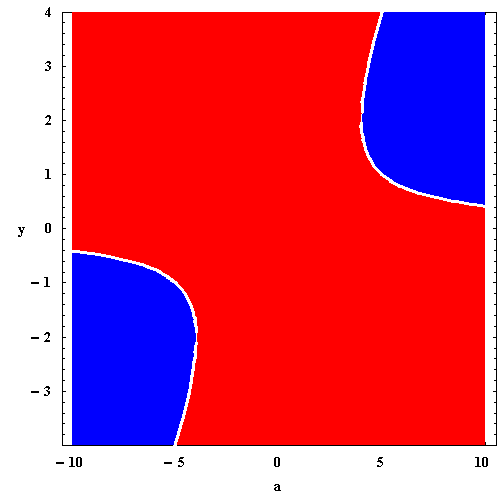 Bifurcations: Answer to Example 1
Bifurcations: Answer to Example 1 Bifurcations: Answer to Example 1
Bifurcations: Answer to Example 1

Example: Consider the autonomous equation
![]()
with parameter a.
 . We get
. We get
![]() .
.
This a quadratic equation which solves into
 ,
,
we have
 , then we have two equilibrium points;
, then we have two equilibrium points; , then we have one equilibrium point;
, then we have one equilibrium point; , then we have no equilibrium points.
, then we have no equilibrium points.
This clearly implies that the bifurcation occurs when
 ,
or equivalently
,
or equivalently ![]() , which gives
, which gives
![]() .
The bifurcation diagram is given below. The equilibrium points are
pictured in white, red colored areas are areas with "up" arrows, and
blue colored areas are areas with "down" arrows.
.
The bifurcation diagram is given below. The equilibrium points are
pictured in white, red colored areas are areas with "up" arrows, and
blue colored areas are areas with "down" arrows.


 S.O.S. MATHematics home page
S.O.S. MATHematics home page Do you need more help? Please post your question on our S.O.S. Mathematics CyberBoard.

Author: Helmut Knaust